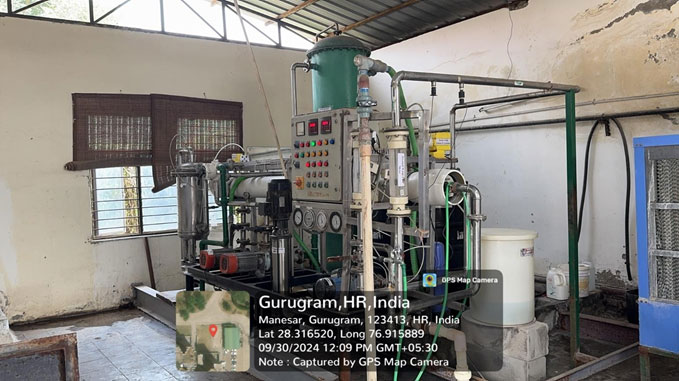Sustainable Water Extraction on Campus
At Amity University Haryana, the strategic use of treated wastewater not only serves multiple purposes but also plays a crucial role in mitigating groundwater depletion. Here’s an expanded explanation that includes how using treated water helps to depressurize groundwater:
Groundwater Extraction and Treated Water Use
1. Groundwater Extraction:
- The university extracts 2.5 lakh liters (250,000 liters) of groundwater for drinking and other utilities. While essential for immediate needs, this practice can lead to declining groundwater levels if not managed sustainably.
2. Treated Water Utilization:
- With 7 lakh liters (700,000 liters) of treated wastewater being utilized for non-potable purposes like flushing systems and gardening, the campus significantly reduces its reliance on groundwater.
Impact on Groundwater Depressurization
1. Reduced Demand for Groundwater:
- By substituting treated wastewater for applications such as toilet flushing and irrigation, the university decreases the demand for fresh groundwater. This is particularly important in areas where groundwater resources are under stress due to over-extraction.
2. Groundwater Recharge:
- The use of treated water in non-potable applications allows the natural recharge of groundwater. As less groundwater is drawn for daily use, the water table has a chance to stabilize or recover, depending on the local hydrology and rainfall patterns.
3. Depressurization Benefits:
- Lowering the extraction pressure on groundwater sources can lead to improved water quality and ecosystem health. Reduced withdrawal rates can help maintain the natural balance in aquifers, preventing issues like land subsidence and degradation of water quality.
4. Sustainable Practices:
- Implementing a dual water system encourages sustainable practices among the campus community. It demonstrates the importance of using treated water responsibly, fostering a culture of conservation and environmental awareness.

From source to storage: The journey of extracted water at AUH campus
© 2021 Amity University Gurugram. All Rights Reserved.
